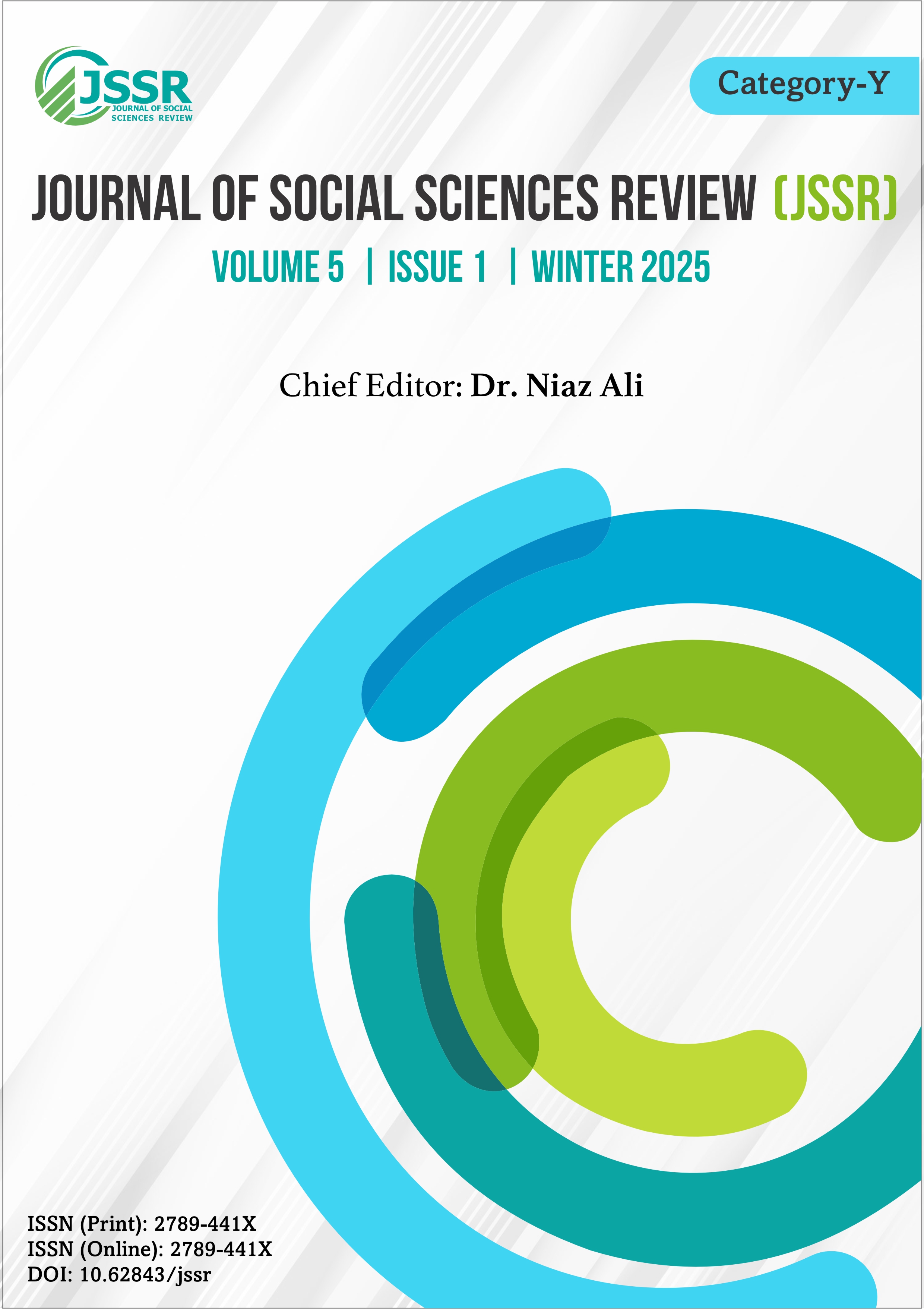The Role of Distributed Leadership in Enhancing Teacher Autonomy
DOI:
https://doi.org/10.62843/jssr.v5i1.457Keywords:
Distributed Leadership, Teacher Autonomy, Secondary Schools, District Dera Ismail Khan, EducationAbstract
This study investigates the role of distributed leadership in enhancing teacher autonomy within secondary schools in District Dera Ismail Khan. This research uses descriptive methods to gather data from male and female secondary educators (each 50 participants) through a 7-point Likert scale survey. The formal research examined how distributed leadership approaches impact teacher independence, specifically regarding motivational factors, job fulfilment, teamwork dynamics, and career advancement opportunities. Research data reveal a prominent positive connection (r = 0.82) between shared leadership and autonomous working practices, yet women teachers experience increased professional independence and team involvement than male teachers in the sample. The study reveals distributed leadership's capacity to develop teacher freedom yet reveals contrasting effects by gender on its implementation effectiveness. Research conducted in District Dera Ismail Khan secondary schools located strong positive correlations (r = 0.82) linking distributed leadership practices to teacher autonomy. Female teachers demonstrated a stronger positive pattern (r = 0.85) than their male counterparts (r = 0.75), showing higher motivation levels and better job satisfaction and professional growth alongside improved teamwork among women teachers. This research shows that distributed leadership enhances teacher autonomy, yet male instructors show weaker connections than female instructors, thus requiring specialized initiatives to optimize leadership effects. The study encourages enhancing distributed leadership models to develop inclusive leadership access for all while studying gender-specific elements to create harmonized leadership structures in schools.
References
Bolden, R. (2011). Distributed leadership in organizations: A review of theory and research: Distributed leadership in organizations. International Journal of Management Reviews, 13(3), 251–269. https://doi.org/10.1111/j.1468-2370.2011.00306.x
Day, C., Gu, Q., & Sammons, P. (2016). The impact of leadership on student outcomes: How successful school leaders use transformational and instructional strategies to make a difference. Educational Administration Quarterly, 52(2), 221-258. https://doi.org/10.1177/0013161X15616863
Denee, R., & Thornton, K. (2017). Effective leadership practices leading to distributed leadership. Journal of Educational Leadership, Policy and Practice, 32(2), 33–45. https://doi.org/10.21307/jelpp-2017-0016
Gurr, D., & Drysdale, L. (2020). Leadership for challenging times. International Studies in Educational Administration, 48(1), 24-30.
Hargreaves, A., & Fullan, M. (2020). Professional capital after the pandemic: revisiting and revising classic understandings of teachers’ work. Journal of Professional Capital and Community, 5(3/4), 327–336. https://doi.org/10.1108/jpcc-06-2020-0039
Heck, R. H., & Hallinger, P. (2010). Collaborative leadership effects on school improvement: Integrating unidirectional- and reciprocal-effects models. The Elementary School Journal, 111(2), 226–252. https://doi.org/10.1086/656299
Ingersoll, R. M. (2017). Misdiagnosing America’s teacher quality problem. In International Handbook of Teacher Quality and Policy (pp. 79–96). Routledge.
Highwood, K., Harris, A., & Hopkins, D. (2020). Seven strong claims about successful school leadership revisited. School Leadership and Management, 40(1), 5–22. https://doi.org/10.1080/13632434.2019.1596077
Lumby, J. (2013). Distributed leadership: The uses and abuses of power. Educational Management Administration & Leadership, 41(5), 581–597. https://doi.org/10.1177/1741143213489288
Skaalvik, E. M., & Skaalvik, S. (2017). Dimensions of teacher burnout: relations with potential stressors at school. Social Psychology of Education: An International Journal, 20(4), 775–790. https://doi.org/10.1007/s11218-017-9391-0
Spillane, J. P., & Coldren, A. F. (2015). Diagnosis and design for school improvement: Using a distributed perspective to lead and manage change. Teachers College Press.
Timperley, H. (2015). Leading teaching and learning through professional learning. Australian Educational Leader, 37(2), 6-9. https://search.informit.org/doi/10.3316/informit.882871574106102
Vangrieken, K., Meredith, C., Packer, T., & Kyndt, E. (2017). Teacher communities as a context for professional development: A systematic review. Teaching and Teacher Education, 61, 47–59. https://doi.org/10.1016/j.tate.2016.10.001
Downloads
Published
Issue
Section
License
Copyright (c) 2025 Copyright in the Journal of Social Sciences Review is retained by the author(s). Authors also grant any third party the right to use the article freely as long as its integrity is maintained and its original authors, citation details and publisher are identified.

This work is licensed under a Creative Commons Attribution-NonCommercial 4.0 International License.
SSR's Editorial Board shares the vision of providing free access to information, education, and science for everyone, thus promoting its content through an OPEN ACCESS POLICY, fulfilling the DOAJ definition of open access. The JSSR adheres to an Open Access and Copyright Licensing Policy based on the belief that making research freely accessible to the public promotes greater global knowledge sharing.
The JSSR uses the Creative Commons Attribution-NonCommercial 4.0 International License. The authors who apply and publish in JSSR consent to abide by the copyright policy set out in the Creative Commons 4.0 license (Attribution-NonCommercial 4.0 International license).
- Copyright in the Journal of Social Sciences Review is retained by the author(s).
- Authors also grant any third party the right to use the article freely as long as its integrity is maintained and its original authors, citation details and publisher are identified.
While "By 'open access' to this literature, we mean its free availability on the public internet, permitting any users to read, download, copy, distribute, print, search, or link to the full texts of these articles, crawl them for indexing, pass them as data to software, or use them for any other lawful purpose, without financial, legal, or technical barriers other than those inseparable from gaining access to the internet itself."



